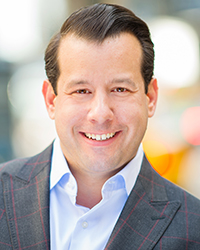
Ariel Property Advisors


Real estate developers have long been smitten with Brooklyn, with their sights set on the upside potential offered by its eclectic neighborhoods, such as Flatbush. As construction continues on several high-profile projects, the cost of land in central Brooklyn is poised to climb as investors take advantage of relative affordability in a region that still offers value and scale.
Mirroring a citywide trend, nearly every asset class in Brooklyn has softened so far this year. From January through August, development sites recorded 147 sales worth $1.18 billion, representing declines of 27% and 30%, respectively, compared to the same period a year earlier. In central Brooklyn – which encompasses Flatbush, East Flatbush, Midwood, Ditmas Park and Kensington – the development market followed a similar pattern, with transaction and dollar volume dropping 24% and 22%, respectively. A notable deal in central Brooklyn this year includes The Jacobov Group’s purchase of 1723 East 8th St. and 1702 East 9th S. from Z&K Realty Developers LLC for $20 million.
Relatively inexpensive land in comparison to some of the surrounding neighborhoods is indisputably one of the biggest drivers of development in central Brooklyn, with the price per buildable s/f this year averaging $157, a remarkable 37% below Brooklyn’s overall average of $250 per building s/f.
The median household income at $57,680 in 2017, according to the latest data from NYU’s Furman Center, is 9% above Brooklyn’s average of $52,782, according to the United States Census Bureau. In neighborhoods surrounding Prospect Park, the average rent per s/f for an apartment in Flatbush is one of the lowest at $32, significantly less than Prospect Heights’ and Park Slope’s $49 per s/f. However, some of the new construction buildings in Flatbush are currently renting for more than $40 per s/f. As many young professionals get priced out of Park Slope and other neighborhoods, they have been flocking to central Brooklyn in search of value, putting the area’s supply/demand dynamics squarely in favor of a developer.
It is therefore no surprise that residential construction projects are rampant in Flatbush. In 2019, a remarkable 70 projects encompassing 3.3 million s/f are currently in the pipeline, which will bring over 3,330 new residential units to the area by 2022.
Flatbush Ave. is Flourishing
Some of the city’s largest institutional developers are enamored with Flatbush Ave. Developer Eli Karp’s Hello Living is in the final phase of its development of Hello Flatbush at 1357 Flatbush Ave. The property, purchased for $1.75 million in 2015, will ultimately contain 35 luxury rental units and 7,000 s/f of retail space.
On 1640 Flatbush Ave. in Midwood, a 145-ft. tall, 13-story mixed-use building, is being developed by SL Green Realty Corp. The property - just steps away from Brooklyn College and spanning 115,056 s/f – will be comprised of 114 residential units, 30% of which will be affordable.
The development site sale of 1457-1471 Flatbush Ave. earlier this year is a testament to Flatbush Ave.’s allure. E&M Associates sold the 12,852 s/f site to Key City Capital in April for $8.7 million, or $169 per buildable s/f, which is above average for the region. In Ditmas Park, meanwhile, construction is underway to replace the century-old Baptist Church of the Redeemer with a nine-story, 76-unit affordable housing building.
Another major selling point for construction on Flatbush Ave. is its attractive zoning. Indeed, parts of Flatbush Ave. offer some of the highest Floor-Area-Ratios (FAR) in Brooklyn, only trailing the rezoned areas of Williamsburg and Downtown Brooklyn. Therefore, for a developer looking to build more scale, but pay a lower land basis, Flatbush is one of the few options around. For example, North of Brooklyn College, the zoning on Flatbush Avenue is R7A, which allows developers to build four times the lot size with a FAR of 4.0.
Unlike other regions in Brooklyn that have limited transportation, such as Marine Park or Mill Basin, central Brooklyn is an area that offers seemingly limitless options, making it a hot “work-live-play” destination, and one of the reasons why commercial properties are so popular.
Due to the above-mentioned reasons, the outlook for the development market in central Brooklyn is incontrovertibly upbeat. The region’s attractive land pricing, along with favorable zoning and demographics, should ensure growth over the near-term and for many years to come.
Lawrence Sarn is a director – investment sales and Remi Mandell is an analyst – investment research at Ariel Property Advisors, New York, N.Y.




